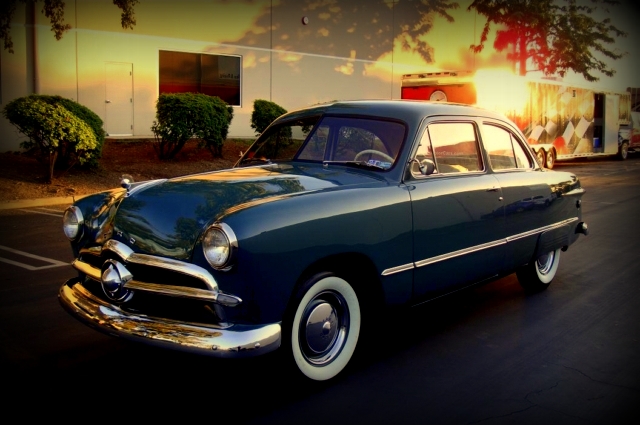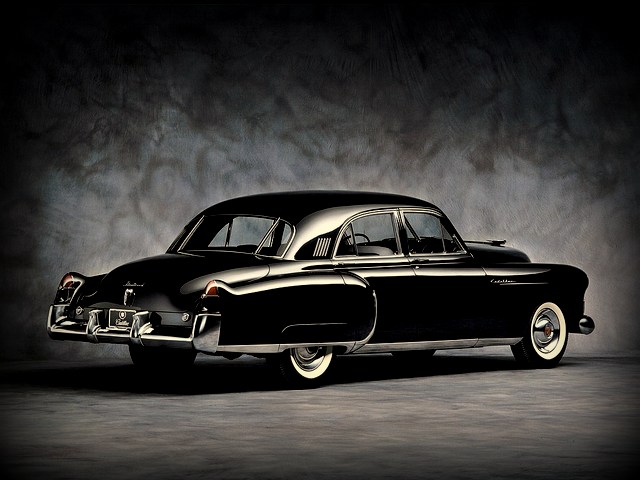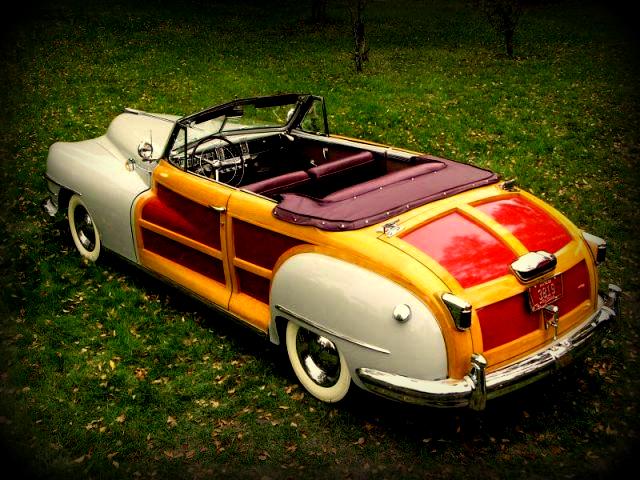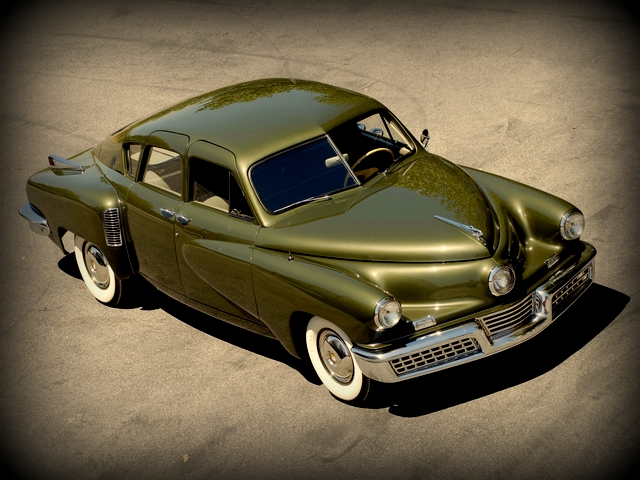The Art Deco Era: Cars of the 1940’s
Posted on Jan 16, 2017 in Antique | Comments Off on The Art Deco Era: Cars of the 1940’s
The 1940’s were a time of great hardship and glory in the world. Within the automotive industry, it marked the end of an era, the spirit of patriotic duty, and the beginning of the jet age.

Cars built in the 1940’s never sparked much of an interest for me. The era of coffin bodies, pontoon and suitcase fenders and art deco designs all seemed unworthy of any praise. For a kid from the 1960’s, the cars seemed old, patrician, and just boring. But, I felt this was unfair. I knew that every decade in automotive design had something special (except the 1980’s), and I knew that in order for me to understand the cars of the 1940’s, I had to first understand the world at that time.

A quick rundown of the major headlines during the 1940’s is not needed. The period was defined by World War II, the War in the Pacific, Adolph Hitler and the Holocaust. It was also the time of icons like FDR, Churchill, Eisenhower, Patton, Ghandi, Hemingway, Bogie, Bacall, Sinatra and Ayn Rand. The decade brought us the creation of the United Nations and the State of Israel, the birth of Apartheid, the computer, the Frisbee, plastics, and the t-shirt. It also brought us the first use of a device that would shape the next decade, nuclear weapons. The 1940’s were a time of change.

On the topic of cars, there was much less happening. In 1942, the American auto industry ceased production due to World War II. For three years, until 1946, all automobile manufacturing was replaced with building armaments and war related products. Automobile production for 1940 was about 3.5 million cars, and for the years 1943, 1944 and 1945 that number basically fell to zero. From 1942 to 1946 companies like Ford, General Motors and Chrysler built everything from tanks to large bombers, and the image of Rosie the Riveter became an American icon.

By 1946, the automakers were back with a vengeance. Vehicle production for the year reached 2.2 million, and then 3.36 million by 1947. Automobile styling remained mostly untouched during the war, but 1946 brought out the war inspired styling cues. Running boards disappeared, pontoon fenders morphed into bathtub bodies, and tail fins and gun sight hood ornaments started to grow. Harley Earl and other designers were inspired by the Lockheed P-38 Lightning fighter, and even created the Dagmar bumper ornaments for the front of the Cadillac based on the plane.

Styling was not gaudy like the 1950’s. Chrome was discreet in many cases, and the attention to detail of even the most mundane window crank was amazing. Art Deco trim looked like solid silver, and mohair tufted interiors were the norm. Designs included fastback coupes, woody wagons, and mirror finish metal wood grain on many Chrysler cars. Bumpers were free standing, directional lenses were still made of glass, and safety features were not yet invented.

The 1940’s were the beginning of the end for many automakers. Brands like Hudson, DeSoto, Studebaker, LaSalle, Crosley, Nash and Packard were slowly slipping into obscurity. Preston Tucker and his safety car the Torpedo came and went after building only 55 cars, and innovations offered by automakers included key start ignitions, sealed beam headlights, pressure vent radiator caps and disk brakes. Unbelievably, the average American could buy a new car for about 800 dollars in 1940 and a gallon of gas for 18 cents.

In the end, there were some fantastic designs. Cars like the Cadillac Sixty Special, the Lincoln Continental, the Chrysler Imperial and Windsor, and the Buick Roadmaster became automotive icons. In Europe, it was still the era of the bespoke coachbuilder, where houses like Labourdette, Chapron, Figoni and Falaschi, and Franay created rolling works of art for Delahaye, Delage, Talbot-Lago and Citroen. The 1940’s were a time of flathead Fords, moonshiners, Davis three wheelers, the Aerocar, and plywood concept cars. It was a time of amazing automotive diversity, and a hell of a lot more interesting than I originally thought.





